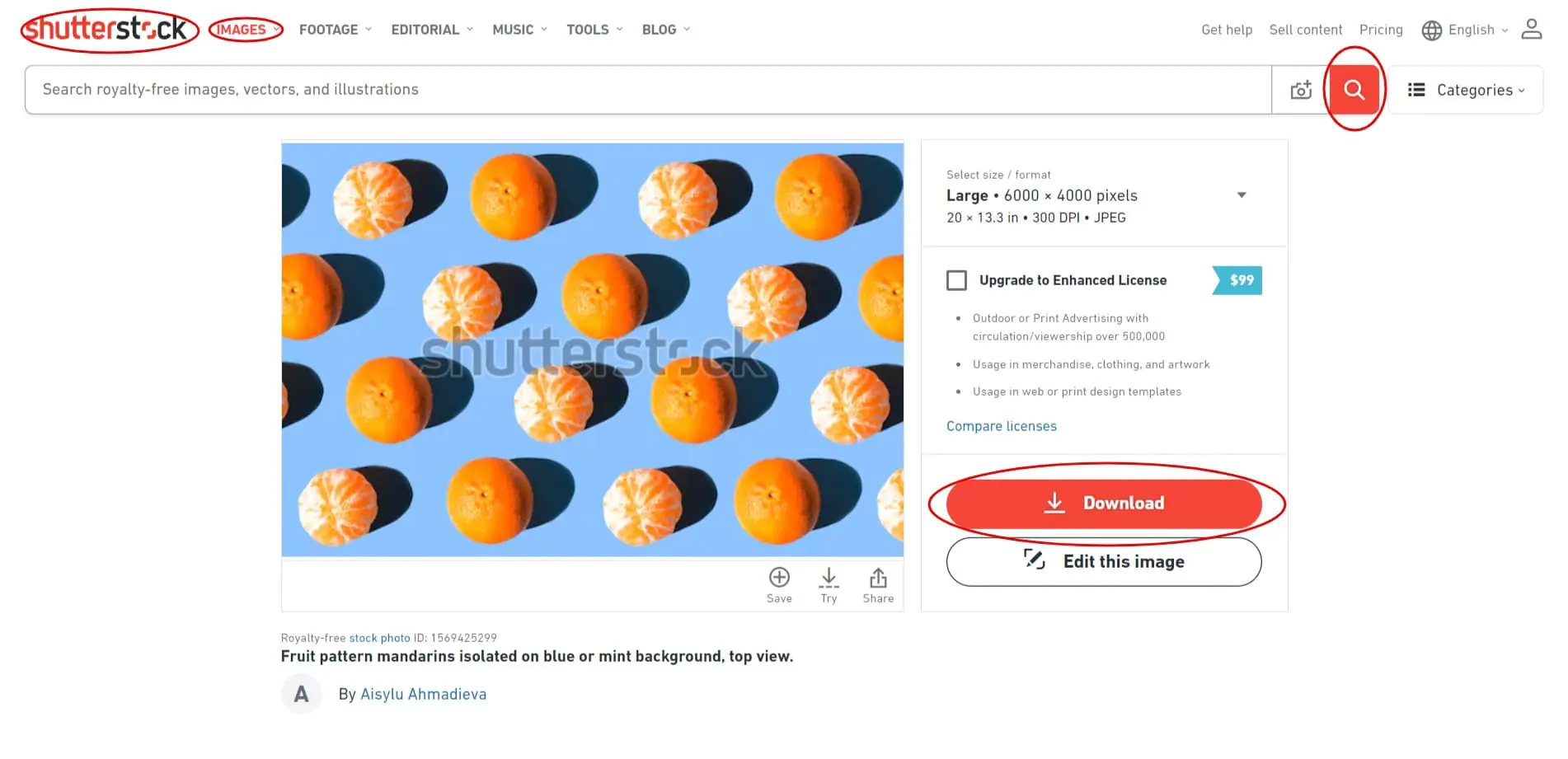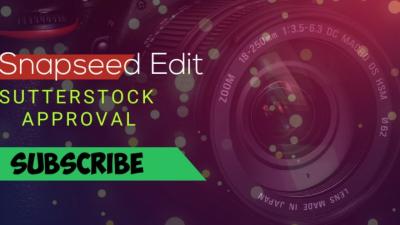If you’re diving into a project—be it a website, presentation, or marketing campaign—finding the perfect images can sometimes feel overwhelming. That’s where Shutterstock comes in. Shutterstock is one of the world’s leading stock image platforms, offering millions of high-quality photos, illustrations, vectors, videos, and music tracks. Its vast library makes it easy for creators like you to find visuals that fit your style and needs, whether you’re after professional photography or creative artwork. Plus, the platform is user-friendly, with powerful search tools and filters that help you quickly locate exactly what you’re looking for. Think of
Understanding Licensing Options for Shutterstock Images

Before you start downloading and using images from Shutterstock, it’s essential to understand the different licensing options available. Shutterstock offers mainly two types of licenses: Standard and Extended. Each license type grants you specific rights to use the images, so knowing the difference can save you headaches later on.
Standard License is suitable for most common uses like websites, social media, presentations, and printed materials under a certain print run. With this license, you can:
- Use the image in digital projects without additional fees
- Include the image in printed materials up to 500,000 copies
- Use the image for online advertising, social media, and blogs
However, the Standard License has some limitations. You can’t use the image in merchandise that is resold (like T-shirts or mugs), or in templates that are sold to multiple clients. Also, if your project exceeds 500,000 copies or impressions, you’ll need an Extended License.
Extended License gives you broader rights, perfect for larger projects, merchandise, or high-volume uses. With an Extended License, you can:
- Use the image in products for resale or distribution
- Unlimited print runs and digital impressions
- Incorporate images into templates for multiple clients
It’s worth noting that the choice of license impacts the cost, so consider your project’s scope carefully. Always check the specific license terms before downloading, and keep records of your licenses for legal protection. If you’re unsure which license fits your needs, Shutterstock‘s website offers detailed comparisons and FAQs to help you decide. Using images within the correct licensing framework not only keeps you compliant but also respects the rights of creators who produce these fantastic visuals.
Steps to Download and Use Shutterstock Images in Your Projects

Getting started with Shutterstock images is pretty straightforward, but it’s helpful to know the exact steps so you can do it smoothly and confidently. Here’s a simple breakdown:
- Create an Account or Log In: First, head over to Shutterstock and sign up if you don’t have an account yet. If you already have one, just log in. Having an account makes downloading and managing images much easier.
- Search for the Perfect Image: Use the search bar to type in keywords related to your project. You’ll see a sea of options, so feel free to filter by orientation, color, image type, or even the style you’re aiming for.
- Preview and Select: Click on images to preview them in detail. Make sure the image fits your needs—check the resolution, composition, and overall vibe.
- Add to Cart or Download: Once you find the right image, click the “Add to Cart” button. If you’re ready to purchase, proceed to checkout. Shutterstock offers various subscription plans or on-demand image packs, so choose what works best for you.
- Download the Image: After purchase, simply click the download button. You can usually select the resolution or file size depending on your project’s requirements.
- Use the Image Responsibly: Now that you have your image, it’s time to incorporate it into your project. Keep your license details handy, especially if you plan to use the image commercially. Remember, Shutterstock licenses typically cover most uses, but it’s good to double-check.
And that’s it! Using Shutterstock images is designed to be user-friendly, so once you get the hang of these steps, it’ll become second nature. Just keep in mind the licensing terms when you start integrating images into your work, whether it’s for web, print, or social media.
Best Practices for Incorporating Shutterstock Images Effectively
Using Shutterstock images can really elevate your project, but it’s important to do so thoughtfully. Here are some best practices to help you make the most out of your images:
- Choose High-Quality Images: Always opt for the highest resolution available, especially if you’re working on print materials or large banners. Clear, sharp images make your project look professional and trustworthy.
- Match the Style and Tone: Select images that align with your brand’s personality and the message you want to convey. Whether it’s vibrant and energetic or calm and minimal, consistency is key.
- Use Images to Complement Content: Your images should enhance your message, not distract from it. Place them strategically next to relevant text or as background elements that support your content.
- Be Mindful of Licensing Restrictions: Always respect Shutterstock’s license terms. For example, some images might have limitations on how they can be used in commercial projects or in certain contexts. When in doubt, review your license agreement.
- Optimize for Web Use: Compress images for faster website loading times without sacrificing quality. Tools like TinyPNG or ImageOptim can help you find the right balance.
- Avoid Overusing Stock Images: While Shutterstock offers a wealth of options, relying too heavily on stock photos can make your project feel generic. Mix in original visuals or custom graphics whenever possible to add uniqueness.
- Maintain Visual Consistency: Use a cohesive color palette, similar styles, or filters across your images to create a unified look throughout your project.
Ultimately, the goal is to use Shutterstock images thoughtfully so they serve your story and resonate with your audience. When you follow these best practices, your projects will look polished, professional, and engaging.
Tips for Optimizing Shutterstock Images for Web and Print
So, you’ve found the perfect Shutterstock images to elevate your project—whether it’s for your website, a presentation, or a printed brochure. But before you hit that download button, it’s smart to think about how to optimize those images to look their best everywhere you use them. Proper optimization not only enhances visual appeal but also ensures fast loading times and compliance with printing standards.
Here are some practical tips to get your images just right:
For Web Use:
- Choose the right resolution: Typically, 72 DPI (dots per inch) is enough for screens. Avoid using unnecessarily high resolutions that can slow down your site.
- Resize images: Before uploading, resize your images to match their display size on your website. For example, if the image will appear as 800px wide, don’t upload a 4000px version.
- Compress images: Use tools like TinyPNG, ImageOptim, or Squoosh to reduce file size without losing quality. Smaller files load faster and improve user experience.
- Use appropriate formats: JPEGs are great for photographs, while PNGs work well for images requiring transparency or sharp edges. WebP is also a modern format offering good compression.
- Implement lazy loading: Lazy loading delays the loading of images until they’re needed, improving page load times.
For Print Use:
- Check the resolution: Aim for at least 300 DPI to ensure clarity in print. Lower resolutions can look pixelated or blurry.
- Use the correct color mode: Convert images to CMYK color mode since most printers use this. Keep in mind, some editing software like Photoshop can help with this conversion.
- Adjust image size: Ensure your image dimensions match your print layout to prevent pixelation or the need for scaling.
- Maintain quality: Always save print-ready images in lossless formats like TIFF or high-quality JPEG. Avoid overly compressed images that lose detail.
- Proof your images: Before final printing, do test prints to see how colors and details appear. Sometimes, colors may look different in print than on screen.
Remember, taking a little extra time to optimize images ensures they look professional, load quickly online, and print beautifully. Whether you’re designing for screens or paper, these tips will help your Shutterstock images shine in every context.
Legal Considerations and Avoiding Copyright Issues
Using Shutterstock images can be a fantastic way to enhance your projects, but it’s crucial to stay on the right side of copyright laws. Nothing kills a creative vibe faster than a legal headache over unauthorized use. Let’s walk through some key legal considerations so you can confidently incorporate images into your work.
Understanding Shutterstock Licenses
Shutterstock offers different types of licenses, primarily:
- Standard License: Suitable for most digital uses like websites, presentations, and social media. It typically allows up to 500,000 copies or views.
- Enhanced License: Necessary for print runs exceeding 500,000 copies, merchandise, or products for resale. It provides broader rights and higher usage limits.
Always double-check which license you have purchased. Using an image beyond the scope of your license can lead to legal issues.
Respect Copyright and Intellectual Property
Even though Shutterstock provides licensed images, it’s your responsibility to ensure proper usage. Avoid the temptation to:
- Alter images excessively: Significant modifications don’t automatically grant you rights beyond the license terms.
- Use images in a defamatory or offensive context: This can lead to legal claims regardless of licensing.
Proper Attribution
Unlike some free image sources, Shutterstock’s licensed images generally do not require attribution. However, if you’re using images under a Creative Commons license or a contributor’s specific request, make sure to give appropriate credit.
Avoid Common Copyright Pitfalls
- Don’t download images from unofficial sources: Only use images directly from Shutterstock or authorized distributors. Downloading from third-party sites may lead to copyright infringement.
- Be cautious with model and property releases: Some images contain recognizable people or private property. Ensure the license covers commercial use if applicable.
- Keep records: Save your purchase receipts and license agreements. They’re proof of your right to use the images if questions arise later.
What to Do If You’re Unsure
If you ever have doubts about whether your use of an image complies with licensing terms or copyright law, it’s best to:
- Consult with a legal professional familiar with intellectual property law.
- Reach out to Shutterstock’s support for clarification.
- Consider alternative images that better fit your legal and ethical standards.
By respecting copyright laws and understanding your licensing rights, you can confidently use Shutterstock images to enrich your projects without fear of legal repercussions. It’s all about being informed, cautious, and respectful of creators’ rights. Happy designing!
Conclusion and Additional Resources for Using Shutterstock Images
Incorporating Shutterstock images into your projects can significantly enhance visual appeal and professionalism. Remember to always select images that align with your brand and message, and ensure you adhere to the licensing terms to avoid legal issues. Proper attribution, when required, is essential to respect creators’ rights and maintain ethical standards.
As you continue to explore Shutterstock’s extensive library, consider these tips:
- Use advanced search filters to find the most relevant images quickly.
- Download multiple versions of an image to see which fits best within your design.
- Organize your assets with folders and tags for easy retrieval.
For a better understanding of licensing options, creative integration, and best practices, consult the following resources:
| Resource | Description |
|---|---|
| Shutterstock Licensing Guide | Details on licensing types, restrictions, and legal considerations. |
| Adobe Stock Usage Tips | Guidelines for integrating stock images into creative projects. |
| Creative Commons | Resources for finding freely licensed images compatible with Shutterstock content. |
By leveraging these resources and best practices, you can maximize the impact of Shutterstock images in your projects while remaining compliant and respectful of content creators.


